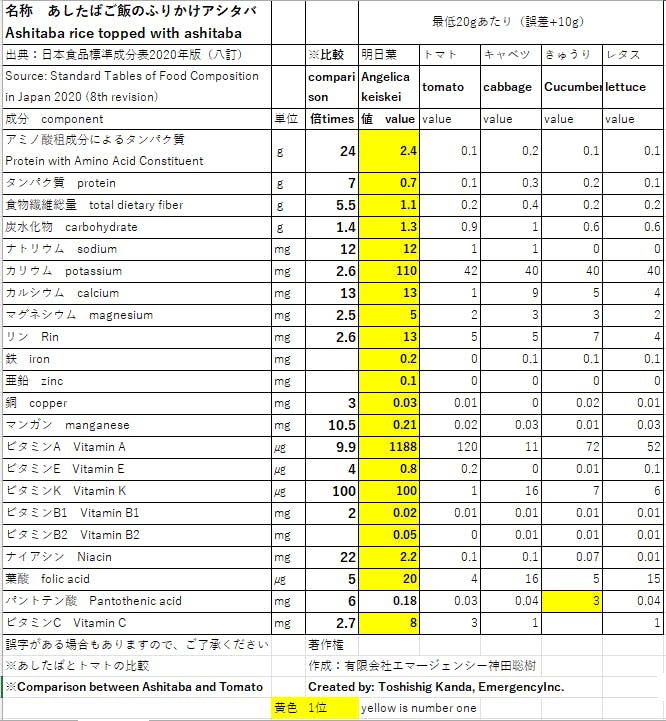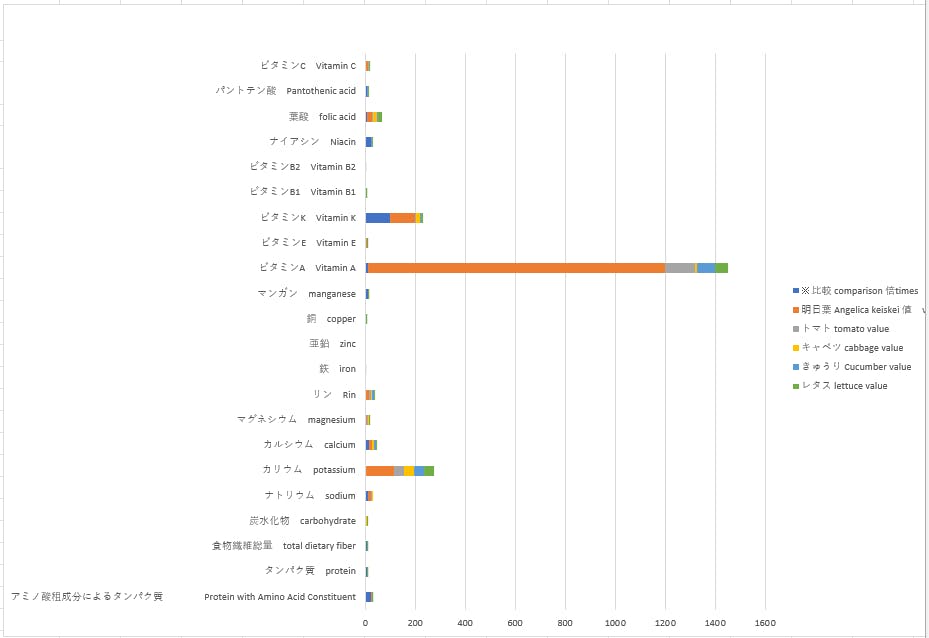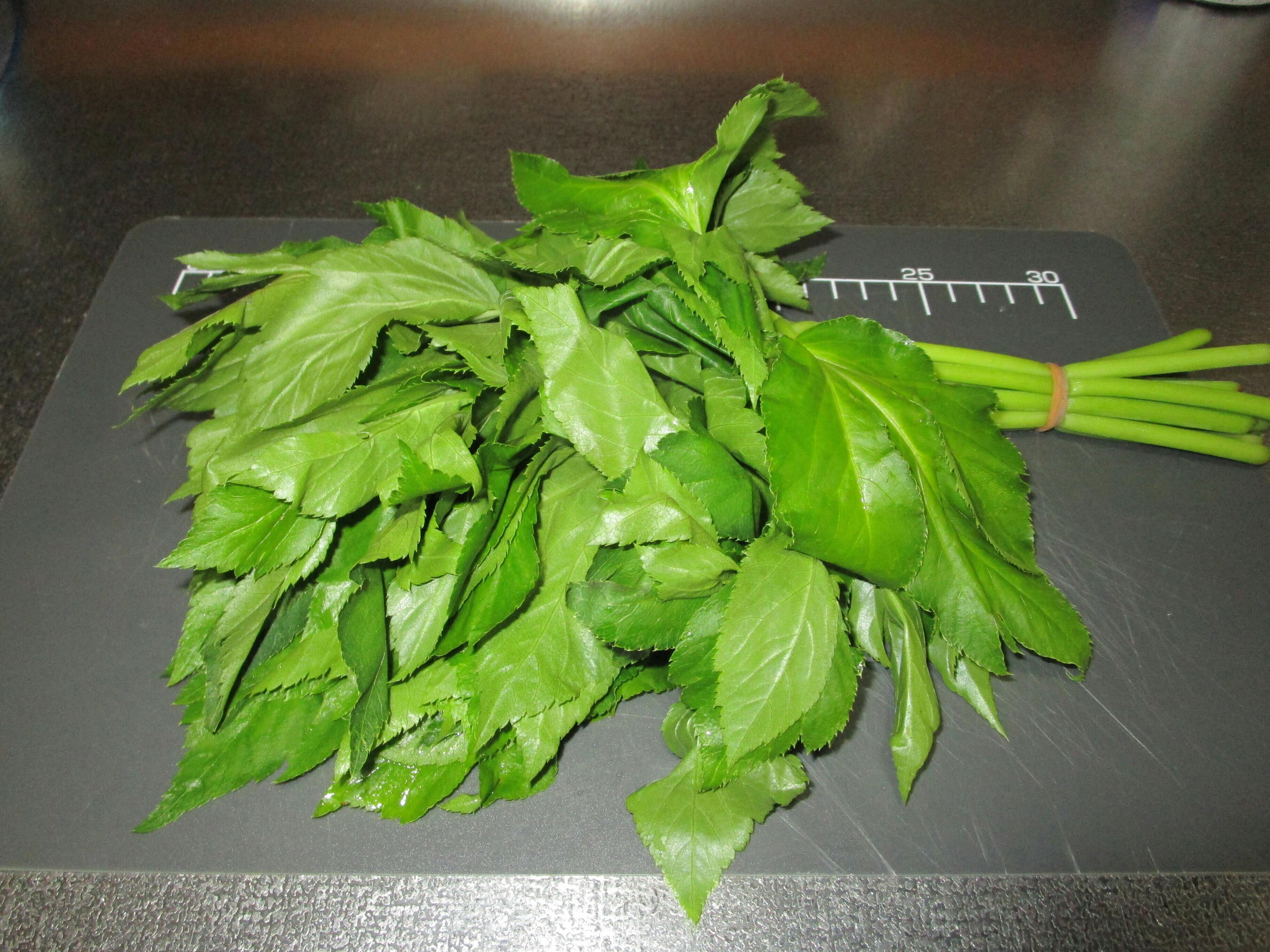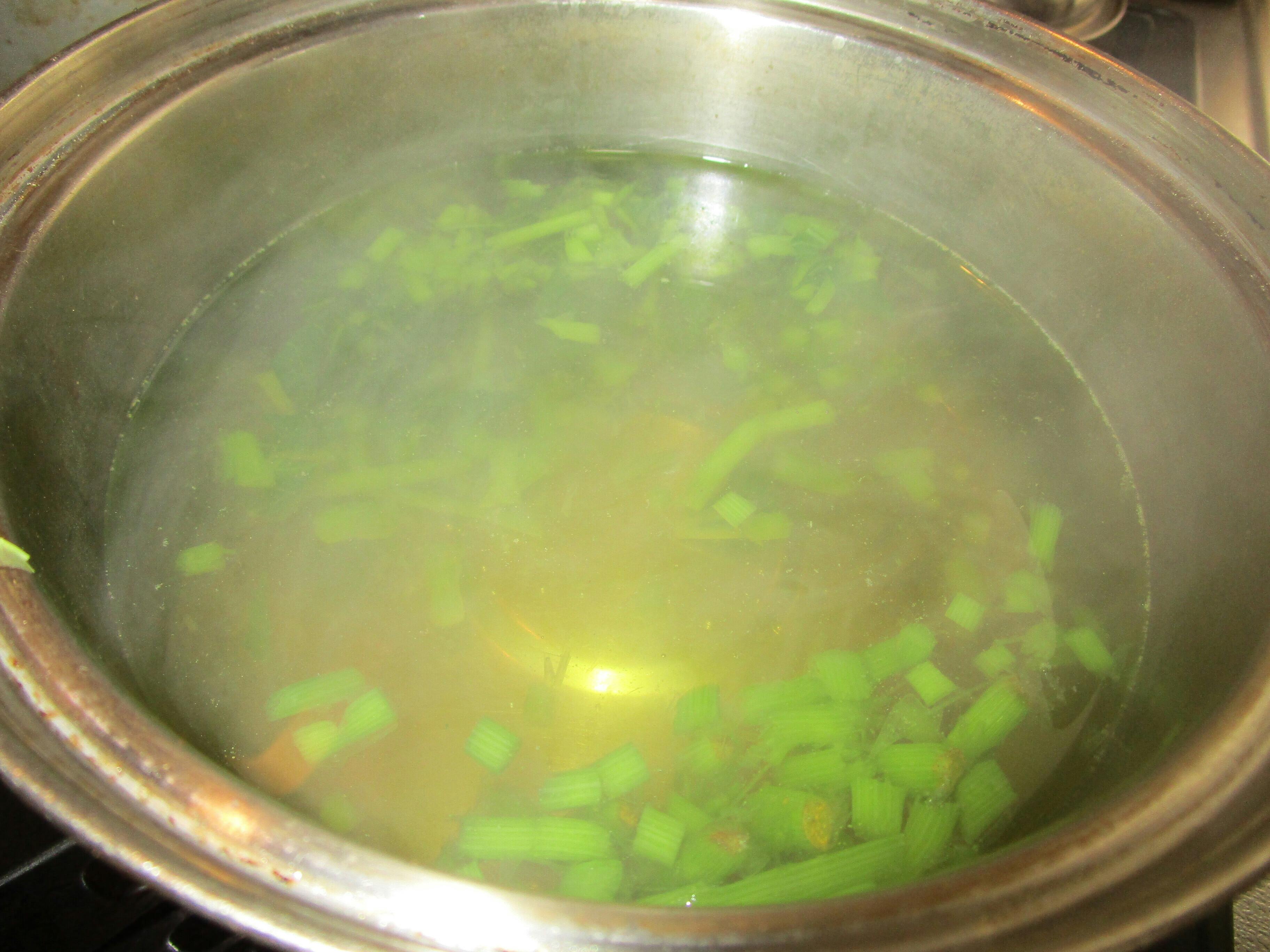
Hello everyone, my name is Toshishige Kanda.
This time's return gift, ashitaba rice with ashitaba, is a long-term storable food that can be eaten whole by encapsulating "Chalcone", which is said to be a vital ingredient of dried useful ingredients, and nutritional ingredients "vitamins" and "minerals". It's a souvenir.
The ashitaba in this photo is from Hachijojima and was given to us by a farmer.
Ashitaba is a healthy vegetable. It is said that even if the leaves are picked today, new shoots will sprout tomorrow. It has a very strong vitality and is a plant of the Apiaceae family unique to Japan. Ashitaba is a healthy vegetable that contains well-balanced minerals, vitamins, and dietary fiber.
It depends on the nutritional value, but there are about 2 times, 10 times, etc.
See the nutrition facts table for raw vegetables.
I compared it with ashitaba, tomato, cabbage, cucumber, and lettuce. 1st place is yellow.
 The above nutritional values are estimated minimum values for raw vegetables, and there is a weight error of -0 to +10g from actual dried Angelica keiskei.
The above nutritional values are estimated minimum values for raw vegetables, and there is a weight error of -0 to +10g from actual dried Angelica keiskei.
Ashitaba contains most of the nutrients. Almost exclusive first place! It's the king, queen, prince, and princess of vegetables.
For example, when comparing Angelica keiskei and tomatoes, it contains 24 times more amino acids, 5.5 times more dietary fiber, 13 times more calcium, 9.9 times more vitamin A, 4 times more vitamin E, 100 times more vitamin K, and 2.7 times more vitamin C than tomatoes.
We often hear that tomatoes are rich in lycopene, but since it is related to β-carotene, it is vitamin A. Ashitaba contains about 10 times more vitamin A than tomatoes.
The effect of potassium is 2.6 times more abundant, and it also has the effect of discharging excess sodium remaining in the body from the body. It has the effect of lowering blood pressure.
Also, by working with sodium, you can expect the effect of muscle adjustment and swelling improvement.
In general, even if you are fine when you are young, as you become middle-aged and older, your defensive power weakens, and when active oxygen increases, the balance with antioxidant power is lost, oxidation progresses, and it accelerates aging and causes various diseases. It is said.
If your immune system is weakened, you may experience symptoms such as feeling tired, catching colds more easily, and getting rougher skin due to increased spots and wrinkles.It is said
However, Angelica keiskei koidzha is rich in "antioxidant ingredients" such as vitamins and potassium that suppress the action of active oxygen, so it is said that it works to reduce harmful active oxygen in the body.
Because Ashitaba lives in a harsh natural environment, it has ingredients to protect itself and prevent damage.

If you boil the ashitaba, you will get a bitter and astringent "Chalcone" aphrodisiac. This golden ingredient is polyphenols. Chalcone, which is a type of polyphenol, is a rare health component that exudes from the leaves and stems when the ashitaba leaves are cut. Polyphenols are also one of the antioxidant substances, and they fight harmful active oxygen in the body.
This time's return gift, ashitaba rice with ashitaba, is a long-term storable food that can be eaten whole by encapsulating "Chalcone", which is said to be a vital ingredient of dried useful ingredients, and nutritional ingredients "vitamins" and "minerals". It's a souvenir.
If you search for "Chalcone", it is a vegetable that attracts so much attention that pharmaceutical companies are also making products.
The following is a boiled stem of Ashitaba. Can you see the broth turning yellow?
The sea and sky on the island are very beautiful. The air is clean, so it is also recommended for asthma sufferers. Since it is a vegetable that grows in an environment where people can be healthy, did you understand how the island's natural ashitaba is a vegetable that is healthy and has all-purpose nutrients? Even if you bring back Angelica keiskei and try to grow it, the nutrition of the land on the volcanic island is completely different from the nutrition of the mainland. "Izu Islands" The production area is important.
↓ Click here for return reservations ↓ Japanese only












